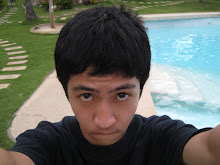
| Also known as | 2Pac, Makaveli |
|---|---|
| Born | June 16, 1971 East Harlem, Manhattan, New York City, New York, United States |
| Origin | The Bronx, New York, United States |
| Died | September 13, 1996 (aged 25) Las Vegas, Nevada, United States |
| Genre(s) | Hip hop |
| Occupation(s) | Rapper, songwriter, actor, record producer, poet, screenwriter, activist |
| Years active | 1990 – 1996 |
| Label(s) | Interscope, Out Da Gutta, Death Row, Makaveli, Amaru |
| Associated acts | Digital Underground, Richie Rich, Dave Hollister, Kurupt, Snoop Dogg, Outlawz, Daz Dillinger |
Tupac Amaru Shakur was born in the East Harlem section of Manhattan in New York City. He was named after Túpac Amaru II, an Incan revolutionary who led an indigenous uprising against Spain and was subsequently executed. His mother, Afeni Shakur, was an active member of the Black Panther Party in New York in the late 1960s and early 1970s; Shakur was born just one month after her acquittal on more than 150 charges of "Conspiracy against the United States government and New York landmarks" in the New York Panther 21 court case. Although officially unconfirmed by the Shakur family, several sources list his birth name as either "Parish Lesane Crooks" or "Lesane Parish Crooks". Afeni feared her enemies would attack her son, and disguised their relation using a different last name, only to change it three months or a year later, following her marriage to Mutulu Shakur.
Struggle and incarceration surrounded Shakur from an early age. His godfather, Elmer "Geronimo" Pratt, a high ranking Black Panther, was convicted of murdering a school teacher during a 1968 robbery, although his sentence was later overturned. His stepfather, Mutulu, spent four years at large on the FBI's Ten Most Wanted Fugitives list beginning in 1982, when Shakur was a pre-teen. Mutulu was wanted in part for having helped his sister Assata Shakur (also known as Joanne Chesimard), his godmother, to escape from a penitentiary in New Jersey, where she had been incarcerated for allegedly shooting a state trooper to death in 1973. Mutulu was caught in 1986 and imprisoned for the robbery of a Brinks armored truck in which two police officers and a guard were killed. Shakur had a half-sister, Sekyiwa, two years his junior, and an older stepbrother, Mopreme "Komani" Shakur, who appeared on many of his recordings.
At the age of twelve, Shakur enrolled in Harlem's famous "127th Street Ensemble." His first major role with this acting troupe was as Travis in A Raisin in the Sun. In 1984, his family relocated to Baltimore, Maryland, After completing his second year at Paul Laurence Dunbar High School he transferred to the Baltimore School for the Arts, where he studied acting, poetry, jazz, and ballet. He performed in Shakespeare plays, and in the role of the Mouse King in The Nutcracker. Shakur, accompanied by one of his friends, Dana "Mouse" Smith, as his beatbox, won most of the many rap competitions that he participated in and was considered to be the best rapper in his school. Although he lacked trendy clothing, he was one of the most popular kids in his school because of his sense of humor, superior rapping skills, and ability to mix in with all crowds. He developed a close friendship with a young Jada Pinkett (later Jada Pinkett Smith) that lasted until Shakur's death. In the documentary Tupac: Resurrection, Shakur says, "Jada is my heart. She will be my friend for my whole life," and Smith calls Shakur "one of my best friends. He was like a brother. It was beyond friendship for us. The type of relationship we had, you only get that once in a lifetime." A poem written by Shakur titled "Jada" appears in his book, The Rose That Grew From Concrete, which also includes a poem dedicated to Smith called "The Tears in Cupid's Eyes".
In June 1988, Shakur and his family moved once again, this time to Marin City, California, where he attended Tamalpais High School. Shakur began attending the poetry classes of Leila Steinberg in 1989. In 1989, Steinberg organized a concert with Shakur's former group, Strictly Dope. The concert lead to him being signed with Atron Gregory who set him up with the up-and-coming rap group Digital Underground. In 1990, he was hired as the band's backup dancer and roadie.




